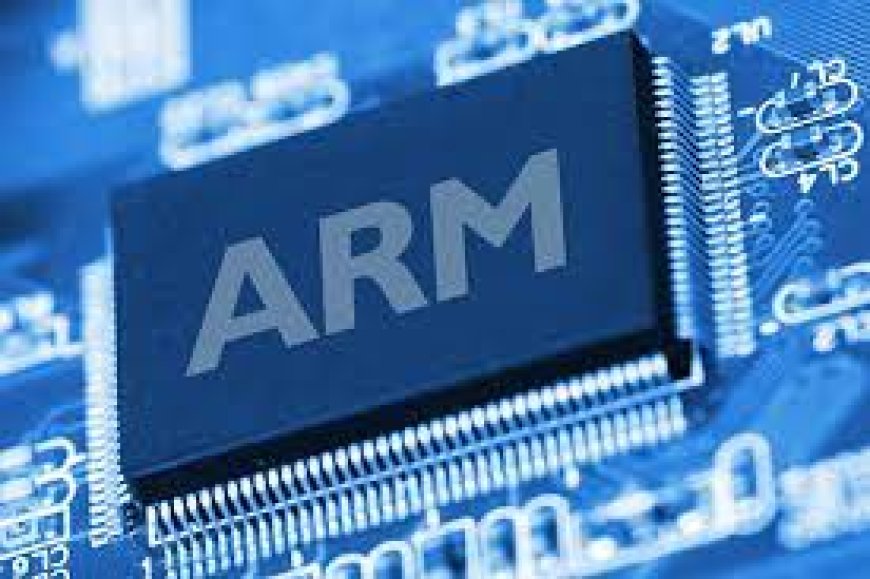Arm Partners to Develop Next-Gen Microchips with Integrated PoW Blockchain
Arm Partners to Develop Next-Gen Microchips with Integrated PoW Blockchain

Smart devices will feature microchips with integrated blockchain technology through a new collaboration between a lightweight layer-1 blockchain and global chip designer Arm.
Minima, a lightweight layer-1 blockchain, is set to integrate blockchain construction and validation directly into smart devices through the Minima Chip, in collaboration with Arm’s Flexible Access Program.
In today’s world, the smooth flow of data is essential. Ensuring data is secure, accessible, and verifiable is critical. Connected devices are central to every important operation, from industrial automation to smart cities. IoT sensors are used in factories to monitor temperature and improve production efficiency, while smart meters help cities manage energy usage, and autonomous vehicles rely on real-time data for safe navigation.
At the core of these smart devices powered by the Internet of Things (IoT) are advanced microchips. These compact integrated circuits act as the vital computing and storage units that process, transmit, and protect the continuous flow of information within connected devices.
Blockchain technology is poised to enhance the functioning of these devices, providing security, immutability, and decentralization. Minima, known for its lightweight architecture, has partnered with global chip designer Arm to integrate blockchain capabilities into the heart of smart devices.
This partnership will leverage Arm’s Flexible Access Program to speed up the development of the ‘Minima Chip,’ supported by Arm’s world-leading semiconductor architecture, which is used by major tech giants such as Apple, Nvidia, Google, Microsoft, Amazon, Samsung, and Intel.
The chip design will introduce a “blockchain-on-chip” functionality, allowing devices to construct and validate transactions, verify data, and issue their own tokens locally.
On-device Validation
The Minima Chip is designed to integrate secure, decentralized blockchain capabilities directly into the hardware of a wide range of industrial and electronic devices. By embedding blockchain services within a dedicated chip, Minima enables secure, autonomous operations across sectors like automotive, healthcare, manufacturing, and smart cities.
Rather than treating security and data verification as external components, this approach incorporates them directly into the hardware. For example, a sensor in a factory could validate its own measurements, a car’s onboard systems could securely manage maintenance logs, and a home device could authenticate its resource usage data without relying on external systems.
By combining Minima’s lightweight blockchain approach with Arm’s chip architecture, the goal is to create a hardware design that is both efficient and does not compromise the device’s primary functions.
The partnership will grant Minima access to Arm’s advanced intellectual property (IP) portfolio, including cutting-edge processors and system-on-chip designs. This collaboration will enable Minima to create a chip that meets the high performance and security standards essential for decentralized operations.
The Minima Chip will utilize Arm’s high-performance optimization and flexible architecture, allowing for seamless scalability. In terms of security, all blockchain operations will be isolated from the main system, minimizing vulnerabilities and safeguarding sensitive data.
Streamlining the Path from Prototype to Production
Arm’s Flexible Access program is described as “a collaborative framework” that will help Minima accelerate the development of the Minima Chip, according to Minima CEO Hugo Feiler.
“This will provide Minima with the technical foundation to fulfill our promise of blockchain everywhere, embedding secure blockchain nodes into everything from smart appliances and smart cars to industrial machines and IoT devices,” Feiler said.
These hardware-level features will be crucial in the growing field of autonomous AI agents. Artificial intelligence systems require data, and there is an increasing need to verify that data in real-time, at the source. Similarly, machine-to-machine exchanges, such as a vehicle transmitting verified payment information to a charging station, can be streamlined when trust is built directly into the device’s chip.
By utilizing Arm’s Flexible Access Program, Minima demonstrates that blockchain verification does not need to be an external add-on. Instead, it can be integrated into the core design of devices, ensuring data trustworthiness and secure interactions locally and efficiently.
What's Your Reaction?
 Like
0
Like
0
 Dislike
0
Dislike
0
 Love
0
Love
0
 Funny
0
Funny
0
 Angry
0
Angry
0
 Sad
0
Sad
0
 Wow
0
Wow
0

































































